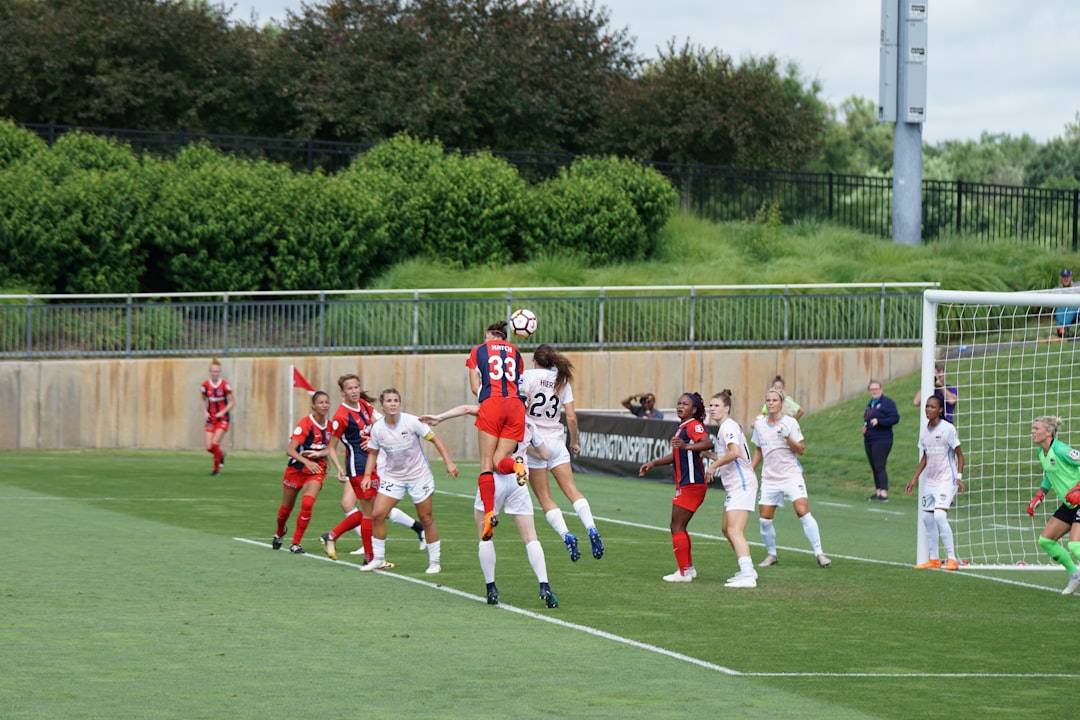TPM #274: Playing College Sport: Unpacking 4 Layers In Sorting Reality From Fiction.
The dream of athletic scholarships is hyped sometimes beyond recognition, their pursuit is big business but reality requires due diligence and preparation.
The offer is enticing. Getting education covered in return for athletic performance. A scholarship, a financial incentive to bring your services to the university or college.
In essence, getting paid to play. The goal for many a young athlete (and parents). This is enticing, and the description sounds glamorous, but there are many layers to unpack is separating reality from not.
The student athlete experience is 2nd to none. The experiences, relationships and memories created during this time can last a lifetime. The planning part requires as much commitment as the time as a student-athlete.

The first layer is the reality and requirements:
In business, we structure marketing campaigns and sales presentations around what is required to be successful in achieving our goal. The same applies for our young athlete in pursuing the goal of being a college athlete. The requirements of being a student athlete at the collegiate level are not often discussed.
The work, the routine, the discipline required. This drive to do this work, which must come from within the athlete for it to be sustainable. No amount of parenting or coaching that can do the work for the student athlete. This includes preparation for competition, but also work in the classroom. Consistently. Over years and years.
In Canada, certain scholarships are available for those who maintain an 80% or more average and others for those 65% or more. There are many layers to the experience, with some sports being more competitive than others. Canada has a university level of varsity sports, and collegiate level. In the USA, the majority of scholarships are not the full ride variety, but partial. They are also subject in most cases to yearly evaluation by coaches and college personnel. The USA has Division 1 (the top level) , Division 2, Division 3 and Junior colleges that all offer athletic opportunities and different forms of bursary or scholarship.

The 2nd layer is a financial running of the numbers:
The Canadian college and university system has never had more opportunities for financial incentives for athletes. The quality of the competition is outstanding across multiple sports. In Canadian university hockey, for example, there are a record number of athletes who are moving on to pro after their time in USPORT (Canadian University Sport Association).
There are university and collegiate opportunities in basketball, soccer, swimming, volleyball, track, baseball, golf, rowing and other sports offered with incentives across the Canadian landscape. Not all of them have scholarships. Some varsity sports offer no scholarships, but are open to whomever can earn a spot.
In the USA, the pool of course is much bigger. Scholarships are worth more, as tuition costs more. For many in Canada at least, this is the holy land of financial incentive because the dollar amounts are bigger. Playing collegiate sport at the highest level (Division 1) is the goal for many, a reality for very few. While there are many, many opportunities in the American system, Canadians breaking through is not easy. While Division 1 is very competitive and most heavily recruited in many sports, there are also opportunities to play Division 2, or Division 3 or Junior College.
Understanding the costs of attending down south, what can be covered and not becomes a big part of the decision equation.
The 3rd layer is big business.
This ties the first layer of what is required to the 2nd layer of financial realities. There is big business both in universities running the sports but also occurring right under in preparing young athletes and their families a path to athletic scholarships. Youth sport is a $28 billion dollar industry in North America. Much of this is in the private coaching and athlete preparation side. Private coaching and higher end “showcase programs” have become the norm in many communities.
An example I can relate best is baseball here in Ontario. The landscape is dotted with “elite” private programs that promise the best path to American scholarships to Division 1, II, III or junior college. The fees are very high, and not all programs or instruction are created equal. Very few of these “elite” programs adequately prepare the student-athletes for the demands of collegiate baseball at the highest level in the USA. Only very few Canadian baseball players can make the leap to playing regularly in Division 1 NCAA. A more common route is Canadian players starting in Junior College in the USA with the hope of earning a Division 1 scholarship after 1 or 2 years. In a very subjective survey, 1 team had a roster of 18 players at the 18u level participating in an elite college prep league. Of those 18, 8 of them are still playing collegiately 3 years later, even though all families paid the team to prepare them for college baseball. This is not including the 6 that went the USA junior college route and came home and/or did not play 1 inning.
When we think of how much work and money went into getting these young athletes to USA schools only to be surprised to learn they were the 5th player depth wise at their position on the roster, never got a chance to play in games (only practice and train), they were not happy and turned around and came home.
The lesson here is to be very careful where money is being spent on these “elite” teams as well as re-evaluating goals. Is the goal to go the USA and sit on the bench?
Other sports of course have different standards and expectations but similar tales requiring caution and due diligence. In hockey, the Canadian universities offering and scholarships are made up by those who have played in the Canadian Hockey League. The NCAA offering now more competitive than ever due in large part to the growth of the junior leagues in the USA (USHL, NAHL, EHL, NA3HL) all with an eye on scholarships. The NCAA is currently in litigation with the Canadian Hockey League to change the eligibility rules of playing both. If that happens, the NCAA gets even more competitive for spots.
In these examples across 2 sports, we can see that collegiate athletics are extremely competitive. We now start to understand that unless your young athlete is 100% driven and committed (along with the family), and very, very talented then opportunities will be expensive and frustrating.

The 4th layer is bringing this all together to evaluate what is best for our student-athlete:
The life of a collegiate athlete anywhere is not easy. In most cases it is having 2 full time jobs. In the USA this is especially so, with more and more sports training/competing through both the fall and winter semesters. This includes a daily regimen of training and preparation, class and study, travel and competition. Daily. 6 times per week. Full on through fall and winter semesters.
In Canada, there is a little more balance depending on the sport. Baseball for example is a 1 semester sport, as are some others. Many are 2 semester and/or require training during “off competition” semester.
The other issue around determining what’s the best fit is to evaluate what you are getting for the requirements of being student-athlete. In Canada, the priority is always the schooling side, whereas in the US the priority will be on sport performance.
Many students are not prepared for the demands put upon them as college athletes. Many moving away for the first time combined with massive time commitment to the sport is more than they expect.
Some criteria to evaluate as you go through the process as a student-athlete and parent:
What are the goals of the student-athlete academically? An athletes’ time competing at a high level comes to an end, what then? The academics are designed to prepare for that time post sport.
Does the student-athlete have a clear picture of what is required on and off the playing field?
What are full and partial scholarship opportunities in the chosen sport?
What are the financial assistance packages available for partial scholarships or bursaries?
Are they renewable yearly or for the term of the degree/diploma?
What are the implications should the student-athlete get injured?
In terms of choosing a college/ university:
Have you met with the coach and received an overview of where our athlete will fit in to their plans?
What is their track record in developing athletes ? (and international athletes if going across the border?).
What is the academic help /priority for student athletes?
What are the costs not covered by the scholarship?
When it comes to finding a collegiate prep team and/or skills coach to help the athlete develop:
What is their track record with placing athletes at the next level?
Do they have support systems and contacts that will help with exposure of the student-athlete (beware that just about every coach and or program will say yes to this question, but the proof is in the pudding – examples and testimonials in speaking to athletes who have come through the program).
Can you speak to other families of athletes who have gone through their program?
There are so many opportunities for the young student-athlete, but the best solutions require much due diligence and should always be driven by the student’s desire to do what is required to have a positive and productive collegiate athletic experience.
Recently, The Physical Movement looked at the college athlete schedule
#260: Is The College Athlete Schedule Harming Their Health?
A recent study looked at the sleep patterns of Division 1 college athletes. The results are alarming, but not surprising. Division 1 NCAA collegiate athletes, the elite of the best, are getting approximately 6 hours of sleep per night!



